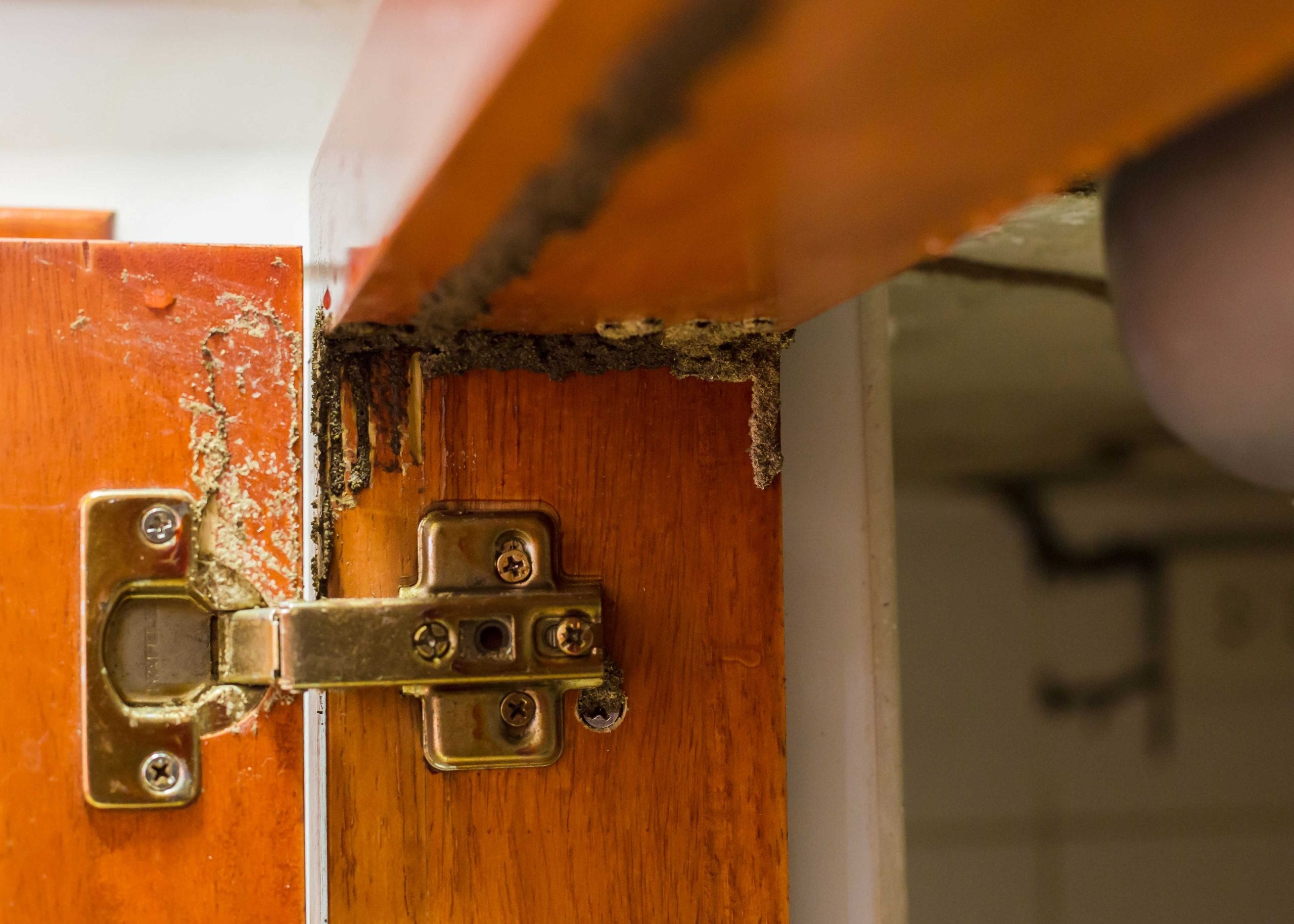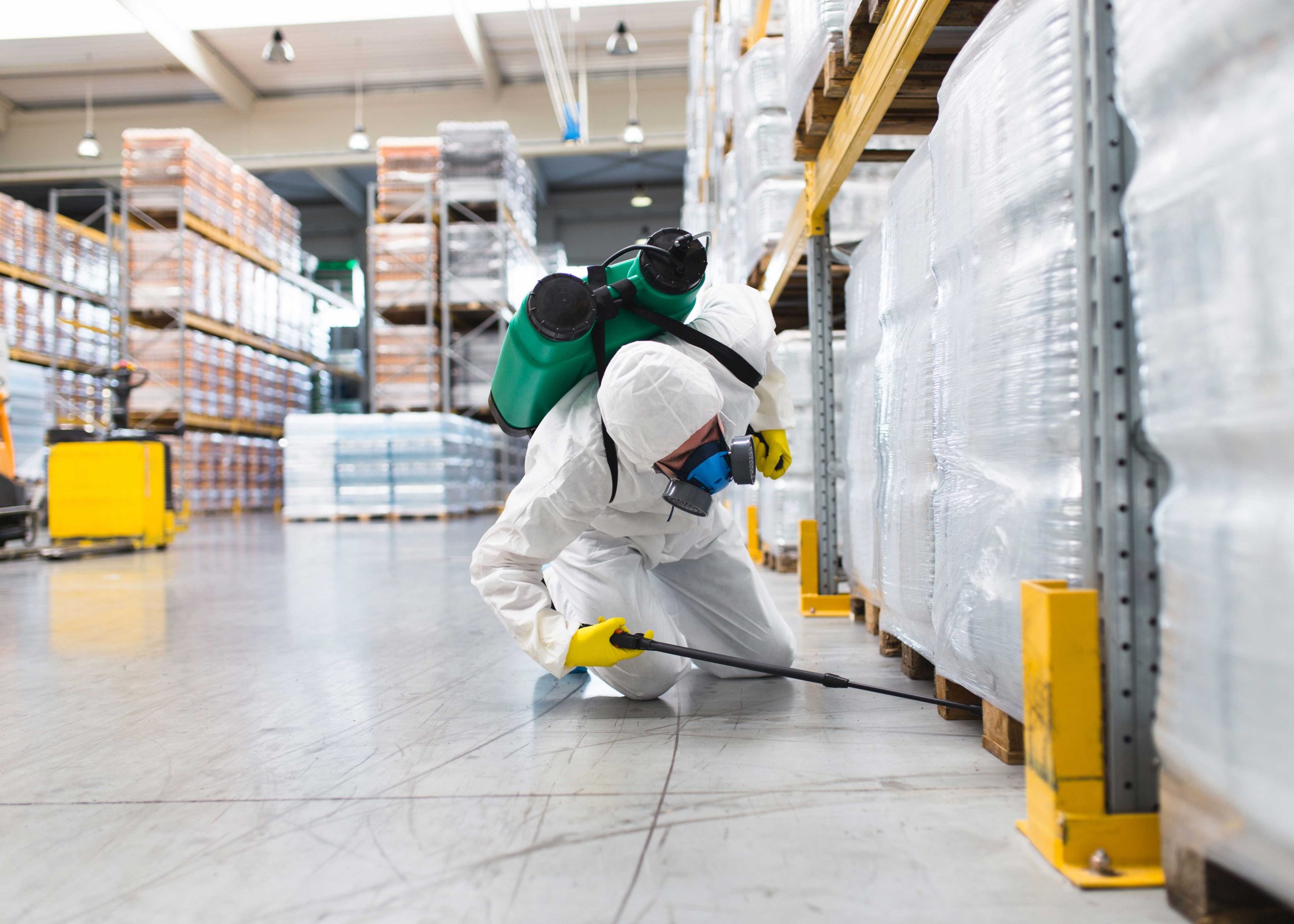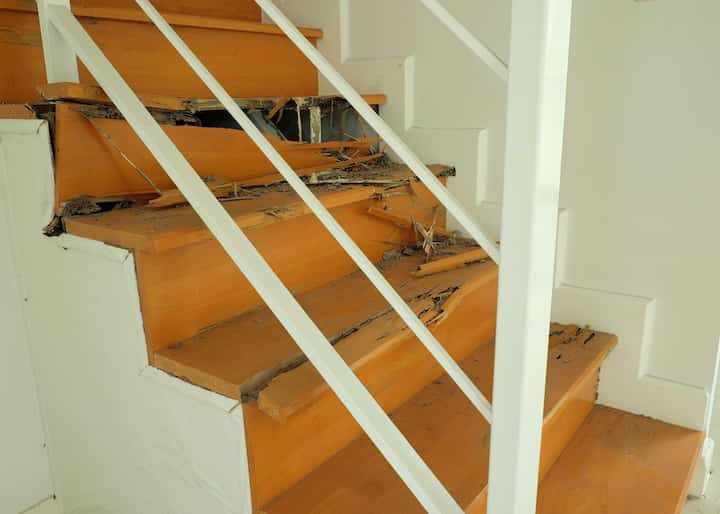Protect your Myrtle Beach home from termites

Demystifying Termites: A Comprehensive Guide for Homeowners
Termites, often referred to as “silent destroyers,” are formidable pests that can cause extensive damage to homes and other wooden structures. Understanding these insects and implementing effective termite control measures is crucial for safeguarding your property.
Termite Identification: Knowing the Enemy
Recognizing termites is the first step in preventing and controlling them. These social insects live in colonies and exhibit specific characteristics that distinguish them from other wood-boring pests: *
- Size: Termites are relatively small, ranging from 4 to 18 millimeters in length.
- Color: They typically vary in color, including dark brown, yellowish-brown, and translucent.
- Shape: Termites have a long and narrow body with six legs and two antennae.
- Swarm: During the reproductive season, swarmers (winged termites) emerge from the colony to find a mate and establish a new colony.
Types of Termites: The Perilous Trio
- While there are over 2,000 species of termites worldwide, only a few are known to significantly threaten residential properties: *
Drywood Termites:
- Drywood termites do not need external sources of moisture and instead rely on the moisture found within the wood they infest. They create tunnels and chambers within dry, seasoned wood, often leaving fecal droppings called frass behind. *
Subterranean Termites:
- Subterranean termites require contact with the soil to obtain moisture and build their colonies. They construct underground tunnels that connect their nests to food sources like wood and wood products. *
Dampwood Termites:
- Dampwood termites thrive in moist, decaying wood, particularly in areas with high humidity. Their colonies are typically found in damp wood near water sources, such as leaks or condensation.
Termite Damage: The Costly Consequences
- Termite infestations can lead to substantial structural damage and financial losses. Their relentless feeding habits can weaken wooden structures, leading to: *
Compromised Structural Integrity:
- As termites consume the wood, they create galleries and tunnels that reduce the strength and stability of beams, floor joists, and other load-bearing components. *
Property Devaluation:
- Homes and buildings with termite damage lose significant value. The cost of repairs and replacements can be exorbitant, impacting the property’s market value. *
Health Hazards:
- While termites do not directly spread diseases to humans, their fecal matter (frass) can trigger allergic reactions and respiratory problems in some individuals.
Termite Control: Prevention and Extermination
- Protecting your home from termite damage requires a multifaceted approach, including preventive measures and professional treatments: *
Prevention:
- – Reduce moisture around your home by repairing leaks and maintaining proper drainage. – Keep firewood and other wood materials away from the foundation and exterior walls. – Eliminate wood-to-ground contact by installing a termite shield or barrier between the soil and wooden structures. *
Professional Termite Control:
- – If you suspect a termite infestation, contact a licensed pest control professional immediately. – Various treatment options are available, including bait systems, liquid termiticide barriers, and fumigation.
The Imperative of Professional Termite Inspection
- Regular termite inspections by a qualified pest control professional are crucial for early detection and effective prevention: *
Thorough Inspection:
- Inspectors meticulously examine accessible areas of your home, including the foundation, crawl spaces, and exterior wood elements, to identify signs of termite activity. *
Detailed Report:
- A comprehensive report is provided, documenting the inspection findings, any termite damage, and recommendations for preventive measures or treatment. *
Peace of Mind:
- Regular inspections provide peace of mind, ensuring your home remains protected from the costly consequences of termite damage.
Conclusion: Safeguarding Your Home from Termite Threats
- Termites pose a significant threat to homes and wooden structures, but understanding these insects and implementing effective termite control measures is paramount for protecting your property. Regular inspections and professional treatments, combined with preventive actions, will minimize the risk of termite damage and safeguard your investment. By recognizing the signs of termite activity, taking preventative steps, and seeking professional assistance, you can effectively guard your home against the silent destroyers that lurk in the shadows.

Termites: The Silent Destroyers
Termites, often referred to as “white ants,” are wood-eating insects that can cause extensive damage to structures, including homes, businesses, and other buildings. These elusive pests can live in colonies of millions, working together to destroy wooden structures from the inside out. Understanding the biology, behavior, and control methods of termites is crucial for preventing and mitigating their destructive impact.
Biology and Behavior of Termites
Termite colonies are highly organized, with each member playing a specific role. The queen is the reproductive center of the colony, responsible for laying thousands of eggs each day. The king’s role is solely to mate with the queen. Soldiers defend the colony from threats, while workers forage for food and build and maintain the nest.
Termites feed primarily on cellulose, a component found in wood, paper, and other plant-based materials. They use their strong jaws to chew through wood, leaving behind a honeycombed network of tunnels and galleries. This feeding behavior can weaken and compromise the structural integrity of wooden structures.
Different Types of Termites
There are numerous species of termites, each with its own unique characteristics and distribution patterns. Some common types of termites found in the United States include:
- Subterranean Termites: These are the most widespread type of termite in the U.S. They build their nests underground and construct mud tunnels to access food sources, making them difficult to detect.
- Drywood Termites: As their name suggests, drywood termites infest dry wood, usually above ground. They do not require soil contact and can be found in furniture, attic beams, and other wooden structures.
- Dampwood Termites: Dampwood termites prefer moist, decaying wood, often found in damp basements, crawl spaces, and wooded areas. They can cause significant damage to wood that remains damp for extended periods.
Signs of Termite Infestation
Termite infestations can be difficult to detect initially, as they often operate hidden within wooden structures. However, there are several telltale signs that may indicate the presence of termites:
- Mud Tubes: Subterranean termites construct mud tubes to travel between their nest and food sources. The presence of these tubes on walls, foundations, or other areas of a building can be a strong indication of termite activity.
- Hollow-Sounding Wood: Termite-infested wood may sound hollow when tapped, as the insects hollow out the wood from the inside.
- Swarmers: Termites with wings, known as swarmers, often emerge from infested structures during certain times of the year. The presence of swarmers is a clear sign of an active termite colony.
- Frass: Termites produce small, sawdust-like pellets called frass. The presence of frass can indicate termite activity in walls, attics, or other areas of a building.
Controlling Termites
Effective termite control requires a multi-faceted approach that combines prevention, detection, and treatment methods. The following measures can help prevent and control termite infestations:
Prevention Measures
- Eliminate Moisture: Termites thrive in moist environments. Fixing leaks, controlling humidity levels, and ensuring proper drainage can help reduce termite attraction.
- Remove Wood Debris: Termites feed on wood, so removing wood debris around buildings, such as firewood, stumps, and fallen branches, can help reduce the risk of infestation.
- Inspect Regularly: Regularly inspect buildings for signs of termite activity, such as mud tubes, hollow-sounding wood, or swarmers. Early detection allows for prompt treatment.
Detection and Treatment
- Professional Termite Inspections: Regularly schedule professional termite inspections to detect infestations before significant damage occurs.
- Termite Monitoring Systems: Install termite monitoring systems around the perimeter of buildings. These systems can detect termite activity early, allowing for targeted treatment.
- Termite Treatment Options: Various termite treatment options are available, such as chemical treatments, bait systems, and physical barriers. A qualified pest control professional can determine the most appropriate treatment plan based on the specific situation.
Conclusion
Termites are a serious threat to wooden structures, causing billions of dollars in damage each year. Understanding their biology, behavior, and control methods is crucial for preventing and mitigating their destructive impact. Practicing preventive measures, conducting regular inspections, and implementing effective termite control strategies are essential to protect buildings from these silent destroyers.

Termites: The Hidden Danger Lurking Within Your Home
Termites are a significant threat to the structural integrity of homes and other wooden structures. They work silently, causing substantial damage before their presence becomes evident. Understanding termites and their behaviors is essential for preventing and eradicating these destructive pests.
What Are Termites?
Termites are insects that feed on cellulose, the primary component of wood. They belong to the order Blattodea, which also includes cockroaches. Termites live in colonies, with each colony containing multiple castes, including workers, soldiers, and reproductives.
Types of Termites
There are over 2,000 species of termites worldwide, but only a few are known to cause significant damage to structures. The most common termite species in the United States are:
- Subterranean Termites: These termites live in colonies underground and build tunnels to reach wood sources.
- Drywood Termites: These termites live inside wood and do not require contact with soil.
- Dampwood Termites: These termites infest wood that is damp or decaying.
Signs of Termite Infestation
Early detection is crucial for effective termite control. Here are some common signs of a termite infestation:
- Mud tubes on foundation walls or around pipes
- Hollow-sounding wood
- Discarded wings near windows or doors
- Buckling or sagging wood
- Wood with a maze-like pattern of tunnels
- Sticky, brown fecal pellets
Consequences of Termite Damage
Termite damage can have severe consequences, including:
- Structural instability, compromised load-bearing capacity
- Extensive repairs and renovations
- Property devaluation
- Health hazards due to mold and mildew in damaged wood
Prevention and Control
Proactive measures are essential for preventing and controlling termite infestations:
- Regular inspections by a licensed pest control professional
- Eliminating moisture and wood decay
- Maintaining adequate ventilation to prevent moisture buildup
- Proper sealing of cracks and gaps
- Using termite-resistant building materials, such as pressure-treated lumber
Termite Treatment Options
If a termite infestation is detected, timely treatment is imperative. The most common treatment options include:
- Soil Treatment: Applying insecticides to the soil around the foundation to create a barrier against termites
- Baiting Systems: Installing bait stations around the property to attract and kill termites
- Fumigation: Using a gas to eliminate termites throughout a structure
Choosing a Termite Control Company
Selecting a reputable termite control company is vital for effective treatment and prevention. Consider the following factors when choosing a company:
- Experience and certifications
- Licensed and insured professionals
- Proven track record of successful termite control
- Comprehensive inspection and treatment plans
- Warranties and guarantees
Conclusion
Termites pose a serious threat to the integrity of homes and other wooden structures. By understanding their biology, behavior, and signs of infestation, homeowners can take proactive measures to prevent and control these destructive pests. Regular inspections, proper maintenance, and prompt treatment are essential for safeguarding properties from termite damage.
Get Your Local EstimateSpecialized experts in termite removal in Myrtle Beach.
It’s essential to make termite removal a priority. Protect your home from the devastating effects of termites with professional termite removal services in Myrtle Beach. Termites can cause extensive damage to your home’s structural integrity, leading to costly repairs and maintenance in the future. Regular termite inspections and treatments are necessary to prevent and eliminate termite infestations. Our network of pest control experts in Myrtle Beach offer comprehensive termite removal options, from inspections to soil treatments, bait stations, fumigation, and preventative measures. Our experienced and knowledgeable team will diagnose any potential termite issues before they become major problems, which can save you money in the long run. Don’t wait until it’s too late to protect your home from termites. Contact our team now to schedule a termite inspection and take the necessary steps to prevent and eliminate termite infestations. With our quality service and competitive prices, you can trust that your home is in good hands. Protect your home and your investment with professional termite removal services in Myrtle Beach.

Get your fast, local termite control estimate
1. Call our team or complete our estimate form to schedule a termite inspection.
Our calls and form completions are completely free to you. You will only be charged if you decide to work with one of our professional pest control service experts. Our Myrtle Beach termite removal contractors have years of experience and are knowledgeable in identifying and treating termite infestations. You can feel confident that your home will be in great hands with one of our network professionals.
2. Connect with a local Myrtle Beach termite removal expert.
Completing our form is a great option if you’re busy and want someone to get back to you at a later time. A call will connect you with a termite removal professional quicker. Receive your competitive estimate; often, you can receive an estimate right on the phone call, and sometimes a little more discovery is involved, and the termite removal expert might want to do some basic inspections before giving the estimate.
3.Don’t wait until it’s too late to protect your home from termites.
Contact our network now to schedule a termite inspection and take the necessary steps to prevent and eliminate termite infestations. With our quality service and competitive prices, you can trust that your home is in good hands. Protect your home and your investment with professional termite removal services in Myrtle Beach.